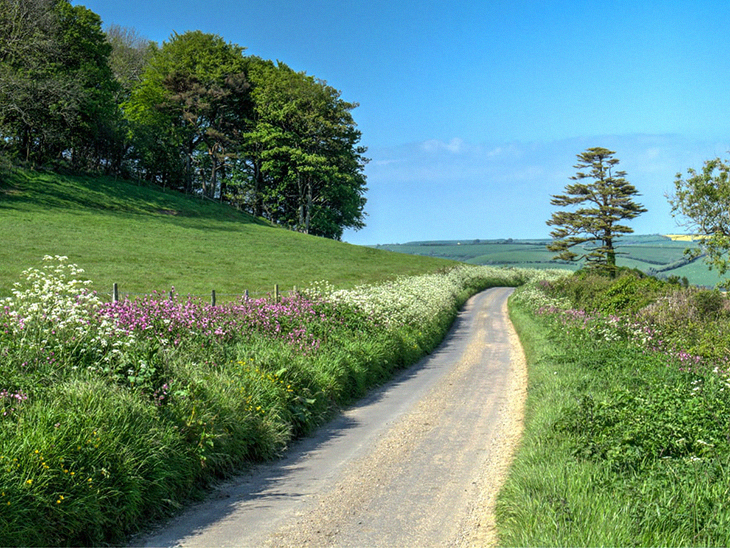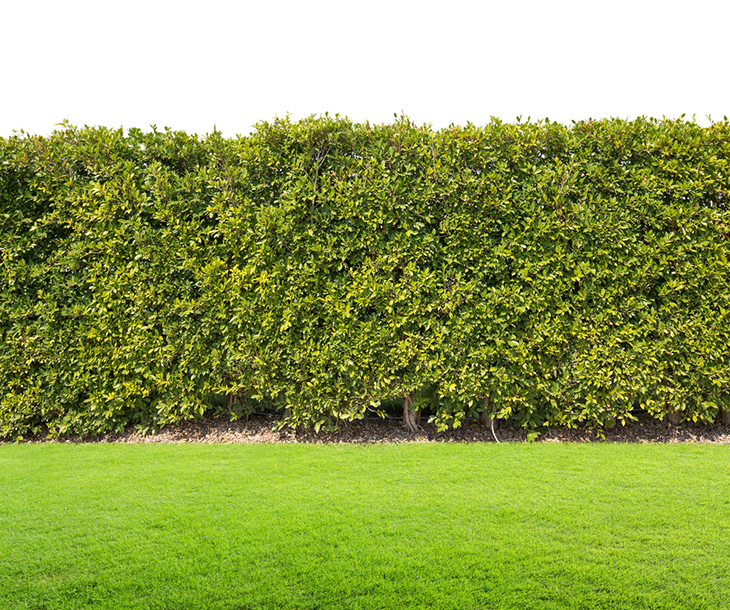
Visit the countryside of many areas, and you’ll come across these beautiful hedgerows. They are a sight to behold. They add beauty and dimension to the woodlands and farmlands. However, not too many people think about their benefits other than for aesthetic purposes.
Nature warriors have been trying to save forests for years. They have focused on the trees that have been cut and cleared. Not too many of them focus on hedgerows, but these things are actually 2,000 times more vital for the world’s ecosystems.
The hedgerow is a humble sight that’s been norm to any countryscape. You can find many of them in Europe and certain parts of North America. This is also very common in the UK. As mentioned earlier, not too many people think about their benefits, but some scientists this that they act as ecosystem anchors. These hedgerows host host more than 2,000 different species of plants and animals in just one year.
In fact, one journal that was published recently talked about an English ecologist’s report on an old hedgerow. He observed one that was close to his home and said that throughout the year, the area had more than 2,070 species living in it. He found badgers and hundreds of beneficial insects thriving.
“Hedgerows define our countryside and provide many environmental services, but are also vitally important for wildlife as a refuge, a source of food, and as corridors along which they can move through the landscape,” wrote the National Hedgelaying Society. This is the only charity available that was dedicated to maintaining the traditional skills of hedgelaying. They also encouraged the use of hedgerows especially in terms of preserving wildlife and beautifying the landscape.
There are around 435,000 miles of hedgerows in Britain. These greeneries stretch and travel farther than the entire British road network. These have been placed to keep trespassers out. Some have been placed to keep animals in. Right now, there are around 30 recognized traditional styles of hedgerows. These designs date back to some 800 years before.
Used as a Home, Hotel, and Highway
These hedgerows may appear either like a manicured wood wall or a tangled mess. Whatever the case may be, scientists found that the richness of the species thriving in the hedgerows of Belgium was actually higher than in their forests. Around 30 percent to be exact. Thus, this proves how the hedgerows have become a microcosm of the forest ecosystem. Those high reaching canopy shades that are growing everywhere keep moist in and is able to attract several kinds of fungi and animals. This, in turn, enhances competition and diversity in the area of plants that are fighting for light, pollinators, and several other resources.
The hedgerows were seen to host a diverse environment that brings in pollinators for the spring and summer blossoms that grow. When this happens, bees make their home there and thus, increases adjacent crop yields as an after effect. This environment also attracts insect-devouring birds. These birds are crucial as a study in California showed because people have been able to save as much as $4,000 each year in insecticide costs. A 1,000-foot hedgerow does make a difference. These are able to bring in insects such as wasps and hornets. These creatures devour on aphids and other unwelcome diners oftentimes present in a vegetable garden.

When it comes to countryscapes, hedgerows are also highways. Badgers, hazel dormice, and hedgehogs use the plants as camouflage to help them move around without getting noticed. In agricultural areas, on the other hand, one research discovered how hedgerows have become the best way to connect splintered stretches of forest or untouched fields. This can be crucial in maintaining health for several populations of animals.
Then, there are the nocturnal creatures such as moths and bats. They make use hedgerows to help them map out flight paths as they safely navigate their way in the countryside. Researchers have also observed how around two-thirds of the moths were sitting on or traveling parallel to a hedgerow as they move around in the dark.
Like all plants in the environment, the growth that thrives in a hedgerow can store carbon. The British government thinks that the since hedgerows can outlive most life, these could be a good method to help absorb greenhouse gas emissions. In fact, they may even be better than planting trees. Of course, there’s more to it than just that. Hedgerows protect the ground from soil erosion. They do this by preventing rains or winds from spreading the soil in a paddock out into streams or streets. There’s also a study that shows how they help lower the spread of disease in livestock that’s present in the area.
Now, there are so many reasons why countries have come together as they try to increase the coverage of their hedgerows. In January, French President Emmanuel Macron promised around €50 million just to plant an impressive 4,300 miles of hedgerows. In Britain, a non-profit action group that represented the government’s official conservation watchdog, has signed a petition. They wanted to increase Britain’s hedgerow network by around 40 percent, or approximately 120,000 miles. They made this decision based on the findings discovered by the country’s Climate Change Committee.
It seems as if how people artificially engineer the land is seen to be detrimental, but right when the modern period came, the farmers have developed a habit of separating their paddocks from the neighbor’s by making a hedgerow. Hence, human touch has actually been good because hedgerows have become a beautiful feature of nature that allowed living creatures to congregate and thrive.
What are your thoughts? Please comment below and share this news!
True Activist / Report a typo


